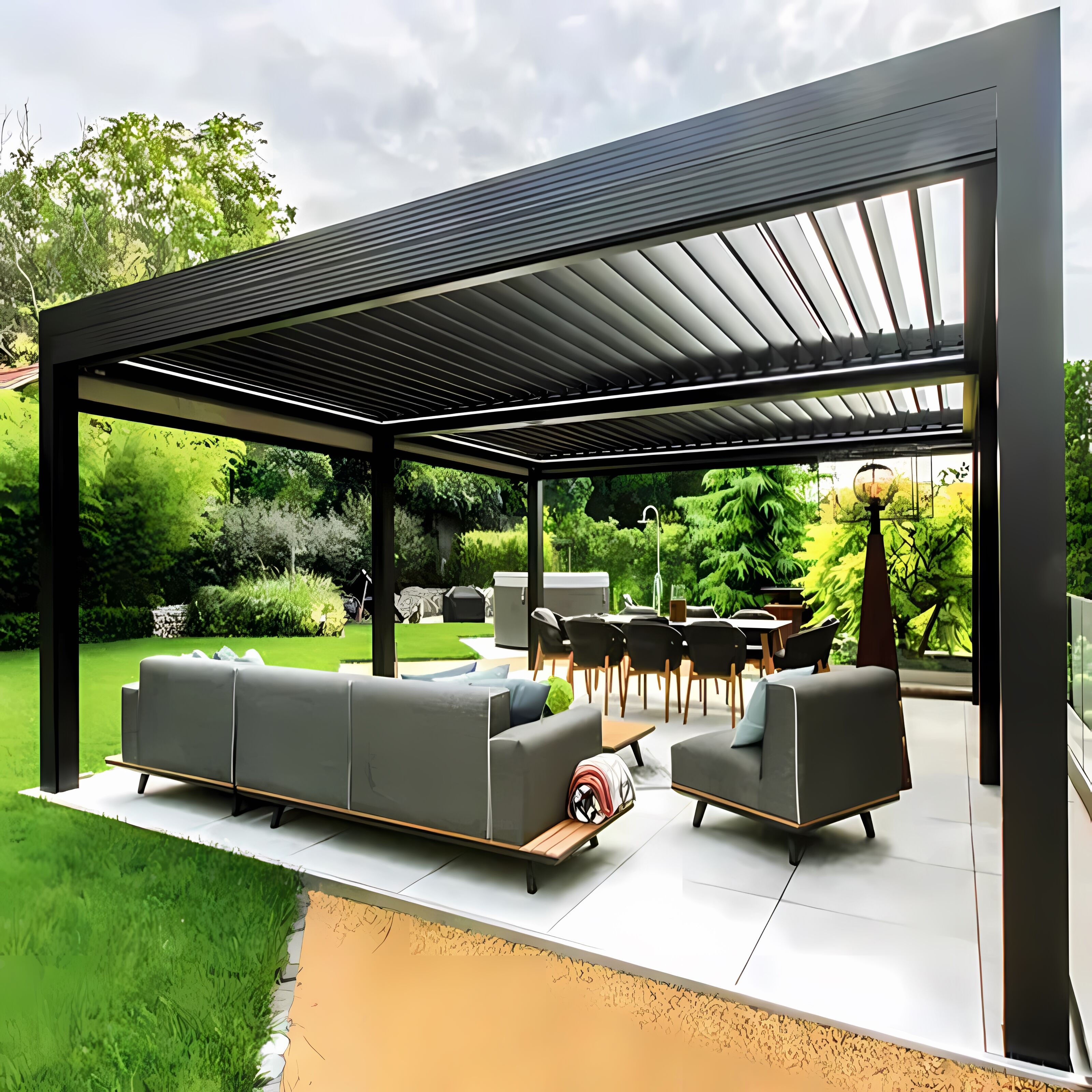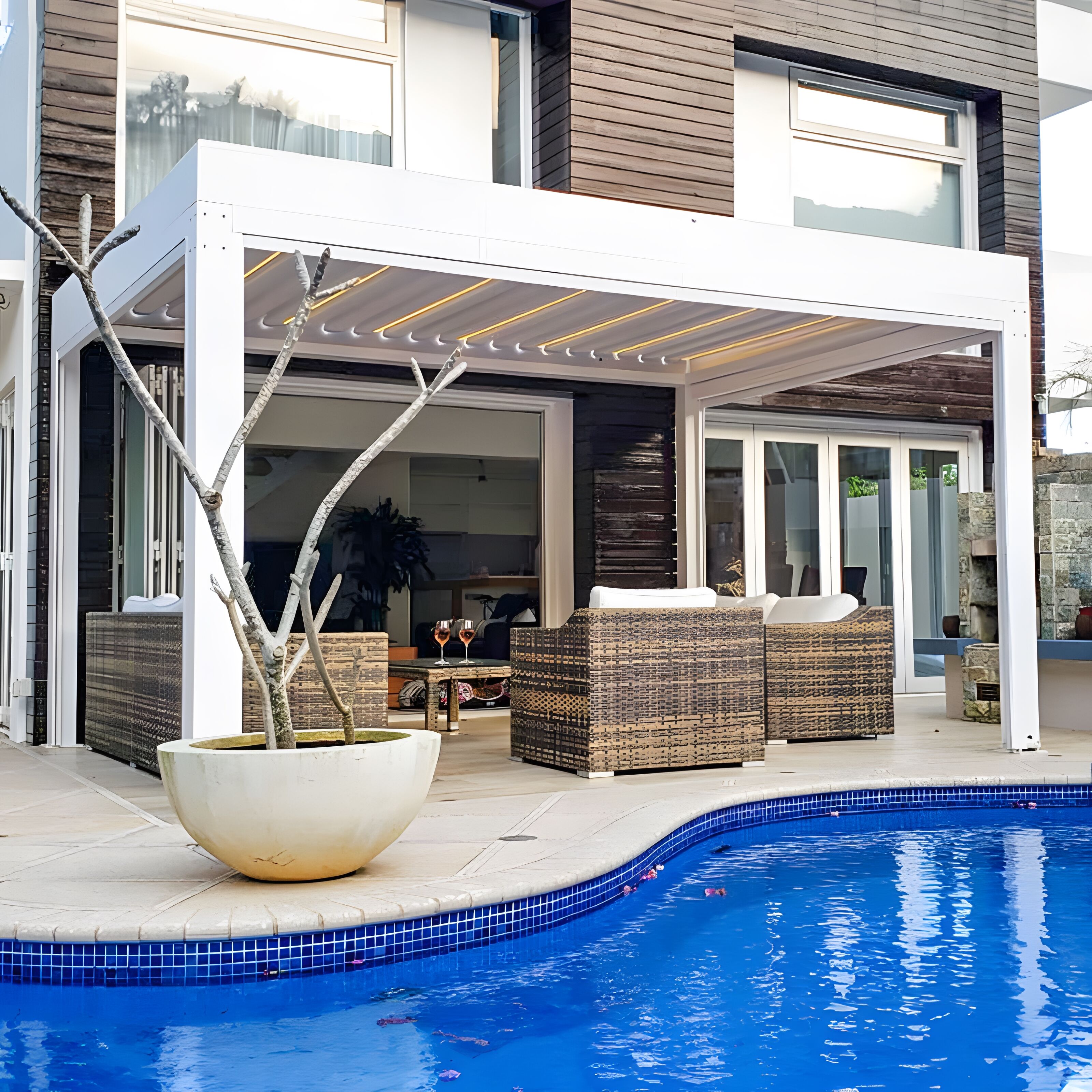How to Choose the Perfect Garden Pergola Design?
A garden pergola is more than just an outdoor structure—it’s a statement piece that shapes the look and feel of your outdoor space. Whether you want it to blend seamlessly with your garden’s natural beauty, stand out as a modern focal point, or serve as a functional hub for entertaining, choosing the right design is key. With so many styles, materials, and sizes to consider, finding the perfect garden pergola can feel overwhelming. But by focusing on your space, needs, and aesthetic, you can narrow down the options to a design that enhances your outdoor living for years to come.
Start with Your Garden’s Size and Layout
The first step in choosing a garden pergola design is to assess the space you have. A pergola that’s too large will overwhelm a small yard, while one that’s too small might feel insignificant in a sprawling garden. Measure your outdoor area carefully, considering not just the footprint of the pergola itself but also the space around it—you’ll need room to move freely, add furniture, and allow plants (if you plan to include them) to grow.
In compact gardens, a lean-to garden pergola (attached to the house or a wall) is a smart choice. It saves space by using an existing structure for support and creates a seamless transition between indoor and outdoor areas. For square or rectangular yards, a freestanding pergola with a matching shape can create balance, while irregularly shaped gardens might benefit from a custom design that follows the natural flow of the space.
Don’t forget to account for other elements in your garden, such as trees, patios, or flower beds. A garden pergola should complement these features, not compete with them. For example, if you have a large oak tree, position the pergola nearby to create a shaded “zone” that works with the tree’s natural canopy, or design it to frame a view of a favorite flower bed.
Match the Style to Your Home and Garden
Your garden pergola should feel like a natural extension of your home’s architecture and your garden’s overall style. A mismatched design can disrupt the harmony of your outdoor space, so take cues from your existing aesthetic.
If your home is modern, with clean lines and minimalist features, opt for a garden pergola with sleek, angular beams and a simple, unadorned structure. Materials like metal (aluminum or steel) or pressure-treated lumber with a smooth finish work well here, as they emphasize simplicity and contemporary flair. Add subtle details, such as powder-coated black hardware or hidden fasteners, to keep the look streamlined.
For a cottage or farmhouse-style home, a rustic garden pergola is ideal. Choose rough-sawn wood (like cedar or pine) with visible knots and natural imperfections, and consider adding decorative elements such as curved brackets or lattice sides. Climbing roses or ivy can enhance the cozy, timeless feel, making the pergola look like it’s been part of the garden for decades.
Mediterranean gardens, with their warm colors and lush greenery, pair beautifully with pergolas featuring arched beams or terracotta accents. A wooden garden pergola with a slightly weathered finish, draped with grapevines or bougainvillea, captures the relaxed, sun-soaked vibe of this style.
No matter your aesthetic, the goal is to create a garden pergola that feels intentional—like it was always meant to be there.
Choose Materials for Durability and Maintenance
The material you select for your garden pergola will impact its durability, appearance, and how much upkeep it requires. Each option has its own pros and cons, so consider your climate, budget, and willingness to maintain the structure.
Wood is a classic choice for garden pergolas, prized for its natural beauty and versatility. Cedar and redwood are naturally resistant to rot and insects, making them ideal for humid or rainy climates, while pressure-treated pine is a more affordable option (though it may require regular sealing to prevent warping). Wood ages gracefully, developing a silvery patina over time, but it does need annual maintenance—sanding, staining, or sealing—to keep it looking its best.
Metal garden pergolas, such as those made from aluminum or steel, offer strength and low maintenance. Aluminum is lightweight and rust-resistant, making it perfect for coastal areas, while steel is heavier and more durable, suitable for windy or harsh climates. Metal can be painted or powder-coated in any color, allowing you to match it to your home or garden decor. Unlike wood, metal requires little upkeep beyond occasional cleaning to remove dirt or debris.
For a unique look, consider mixed materials. A garden pergola with wooden beams and metal brackets combines the warmth of wood with the sturdiness of metal, creating a design that’s both functional and visually interesting.
Think About Function: How Will You Use Your Garden Pergola?
Your garden pergola’s design should align with how you plan to use it. A structure meant for dining will need a different layout than one intended for lounging or growing plants.
If you want to use your garden pergola for al fresco dining, prioritize a design with a flat, stable roof (or a lattice top that’s spaced to accommodate a dining table without obstructing views). Ensure there’s enough height for standing and moving around, and leave room for chairs to be pulled out comfortably. A rectangular or square shape works best here, as it fits standard dining sets.
For lounging, a larger garden pergola with a more open design is ideal. Curved or arched beams can create a sense of spaciousness, while side panels (made from lattice or fabric) can add privacy. Include features like built-in benches or hooks for hanging swings to enhance relaxation.
If you plan to grow climbing plants, choose a garden pergola with sturdy beams and plenty of support. Lattice sides or crossbars give vines like wisteria, clematis, or grapes something to cling to, and a taller design allows them to grow upward without overcrowding the space. Keep in mind that plants will add weight over time, so opt for durable materials like cedar or steel to ensure the structure can handle the load.
Add Personal Touches with Features and Details
The perfect garden pergola design reflects your personality, so don’t be afraid to add custom touches. These details can turn a basic structure into a space that feels uniquely yours.
Lighting is a popular addition: string lights woven through the beams create a cozy glow for evening gatherings, while solar-powered lanterns or recessed LED lights add subtle illumination. For shade, consider retractable canopies or fabric curtains that can be drawn when the sun is intense. These features add versatility, allowing you to adjust the pergola’s environment as needed.
Decorative elements can also elevate the design. Carved wooden brackets, metal scrollwork, or custom engravings on the beams add character, while colorful paint or stain can make the garden pergola stand out or blend in, depending on your preference. If you love to entertain, include built-in features like a small bar area or a shelf for drinks and snacks.
Remember, the best garden pergola designs are those that balance form and function. They should look beautiful while serving your needs, creating a space where you’ll love spending time.
FAQ: Choosing Your Garden Pergola Design
1,What’s the difference between a garden pergola and a gazebo?
A garden pergola has an open, lattice-style roof, while a gazebo typically has a solid, peaked roof. Pergolas offer dappled shade and a more airy feel, while gazebos provide full coverage from sun and rain.
2,How tall should a garden pergola be?
Most garden pergolas are 8–10 feet tall, which allows for comfortable standing and furniture placement. If you plan to grow tall climbing plants or want a more dramatic look, opt for a height of 11–12 feet.
3,Can I build a garden pergola myself, or should I hire a professional?
Simple designs (like lean-to pergolas) can be DIY projects for those with basic carpentry skills. However, larger or custom designs (especially those using heavy materials like steel) are best left to professionals to ensure safety and stability.
4,How much does a garden pergola cost?
Costs vary based on size, material, and design. A small wooden pergola can start at 500–1,000, while a large, custom metal or cedar structure can range from 3,000 to 10,000 or more.
5,How long will a garden pergola last?
With proper maintenance, a wooden garden pergola can last 10–15 years, while metal structures can endure 20–30 years or longer. Regular sealing (for wood) and cleaning (for metal) will extend their lifespan.


